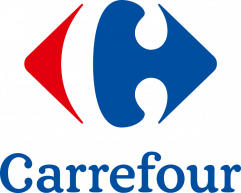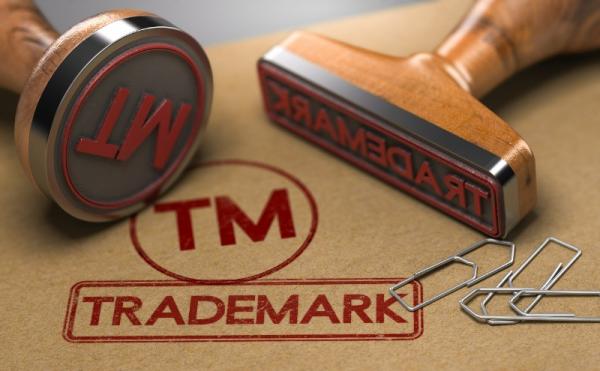Why and how to register your trademark with the INPI?
What is a brand in the sense of intellectual property?
Article L. 711-1 of the Intellectual Property Code (CPI) defines a brand as “a sign used to distinguish the products or services of a natural or legal person from those of other natural or legal persons”.
It can take many forms, the most common being:
- The word mark: it is made up of numbers, letters, words in black characters. As its name suggests, its appearance is not taken into account but only its spelling and pronunciation.
- The figurative mark: these are essentially drawings or any visual signs not including letters, numbers or words. Typically, these are logos.
- The semi-figurative mark: it associates a verbal element with a figurative element. Often, companies combine their logo with their name.
For illustration:
- CARREFOUR est la marque verbale du groupe français Carrefour.
-
 est sa marque semi-figurative.
est sa marque semi-figurative. -
 est sa marque figurative.
est sa marque figurative.
Note that Ordinance 2019-1169 of November 13, 2019, which transposes EU Directive 2015/2436 of December 16, 2015, removed the requirement of “graphic representation” as a condition for the validity of a trademark.
Thus, particularly in recent years, new forms of trademarks have been the subject of registrations. We can thus quote:
- Sound marks: this is a sound extract, formerly represented graphically by onomatopoeia or via a score, but it can now be an audio file directly;
- Movement marks: these are short video extracts and a corresponding file is then accessible on the databases;
-
Multimedia brands: they are represented by an audiovisual file containing the combination of image and sound.
However, they are often refused by institutions and courts due to their lack of distinctiveness; they are not perceived by the public as an indication of the commercial origin of the products.
For example, one company wanted to record the sound produced by opening a can of drink, followed by silence and a fizz. The EUIPO and then the EU General Court rejected the request for the reasons set out above.
Regarding its function, the brand aims to:
- Allow the public (customers) to determine the origin of the product or service in question. Ultimately, the brand allows you to develop a certain reputation and a certain associated quality. Concretely, it is she who will justify the prices asked or quite simply the choice of products and services from one brand rather than another.
- Prevent competitors from using an identical sign or one that would cause confusion for the public.
Who should be interested in registering a trademark?
Any company that wishes to increase its activity, protect itself from competition, develop its reputation and notoriety has every interest in registering its trademark for these reasons. Depending on the case, it may be interesting to register your brand:
- Either at the national level, with the National Institute of Industrial Property (INPI);
- Either at European level, with the European Union Intellectual Property Office (EUIPO);
- Or at the international level, with the World Intellectual Property Organization (WIPO).
The relationships between these different geographic levels of protection will be treated in a separate study.
It is wise to register your trademark as early as possible in the life of the company.
Indeed, in the absence of a trademark, it will not be possible to take action for infringement and consequently, the protection of the name or logo will be more limited.
On the contrary, once the trademark is registered, it will benefit from protection at national, European or international level in the chosen field of activity.
How to choose the right brand?
The brand is essentially intended to be used in a commercial context. Therefore, it is the first element that entrepreneurs have in mind when determining it.
While this is a good practical reflex, it is necessary to complete this approach in order to obtain a legally suitable trademark.
First of all, the chosen sign must be distinctive and as least descriptive as possible in the context in which it is used (article L. 711-2 of the CPI).
Concretely, a dictionary word will be less distinctive by nature than a word created from scratch. For example, ADIDAS can only be associated with the clothing brand while ORANGE can be associated with a telecommunications company, a color, or even a city.
Regarding its absence of descriptive criterion, it is important to choose a sign which is unrelated to the product or service in question. APPLE would therefore be a very poor choice for a company selling apples (and the competent establishment would most likely refuse to register such a mark; the idea being that the mark should not prevent competition from using terms necessary to the description of their products) but it is a perfectly acceptable choice for a computer brand. The same parallel can be made for PATHÉ which is distinctive and non-descriptive in the field of cinema but which would not be viable in an agri-food context.
The more distinctive the brand, the better it will be protected and the easier it will be to prohibit competitors from using a similar sign. A company like RENT A CAR has chosen a more explicit brand but this has the consequence that its protection is much more limited since it will not be able to prevent competitors from using these terms. It is particularly in this context that it may be relevant to opt for a semi-figurative mark to the extent that the visual specificities of the mark will compensate for the lack of originality of the word mark.
Article L. 711-2 of the CPI places other limits on the possibilities offered to applicants: the trademark must not be contrary to public order; it must not mislead the public, in particular as to the nature, quality or geographical origin of the product or service; it must not be filed in bad faith; etc.
Finally, quite logically, it is necessary to carry out a prior art search before using and registering your trademark to avoid any risk of counterfeiting. Article L. 711-3 of the CPI prohibits the registration of a trademark which would in particular infringe:
- an identical or similar trademark for the same or similar products or services;
- a name or company name, if there is a risk of confusion in the mind of the public;
- a trade name, brand or domain name, the scope of which is not only local, if there is a risk of confusion in the mind of the public;
- copyright, a protected design or model;
- etc
To carry out this prior art search, it is possible to use the following databases:
Once the sign has been chosen, it is necessary to determine in which classes the trademark must be registered. Most offices, including the INPI and EUIPO, use the Nice classification system which divides products and services into 45 categories.
For example, if you want to sell clothing and accessories, class 25 “clothing, shoes, headgear” will be the most relevant, but it is possible to also consider class 14 “jewelry, precious stones” if applicable.
In the food industry, classes 29, 30 and 31 are all relevant depending on the specific products in question.
The services are provided for in classes 35 and following.
For each class, you will need to list the most relevant products or services. Examples are provided by the INPI but it is entirely possible to add your own descriptions as long as they are sufficiently explicit.
L’intérêt de diviser les dépôts dans différentes classes est de permettre à différentes entreprises d’utiliser des homonymes pour des produits tout à fait différents. Ainsi, LOTUS correspond à trois principales marques : de voitures, de papier toilette et de biscuits. Malgré leur nom identique, le risque de confusion pour le public est très limité. Ainsi, lors de la recherche d’antériorité, l’existence d’un signe identique dans une classe radicalement différence ne doit pas constituer un obstacle au maintien du signe choisi.
How to register your trademark with the INPI?
To register your trademark in France, the procedure is entirely electronic on the INPI website. It takes between 4 and 6 months between filing the application and registering the trademark.
Concerning its cost, in April 2023, the procedure is billed at €190 for a single class and €40 per additional class.
The registration procedure with the EUIPO will not be discussed in detail here but for information purposes, it costs €850 for one class, €50 for a second, then €150 per class.
Once filed, the INPI publishes the trademark application in the Official Industrial Property Bulletin (BOPI), within 6 weeks (article R. 712-8 of the CPI).
There follows a period during which the institute examines the request and raises any objections; in addition, for two months, the opposition period opens during which any owner of a prior right can oppose the registration via a specific procedure (article L712-4 of the IPC).
If the filing has been correctly made and if neither the INPI nor third parties contest the legality of the future mark, the office will proceed with the registration and the applicant will receive a registration certificate. The brand will also be published in BOPI and referenced in the various databases.
How to manage your brand once registered?
Once registered, the trademark is protected for 10 years (article L712-1 of the CPI). The starting point is that of filing the application and not the date of registration.
However, in the absence of serious use for a period of 5 years, the trademark risks forfeiture (article L. 714-5 of the CPI).
It is for this reason that it is essential to only register trademarks which are intended to be actually used and seriously exploited. Keeping evidence of use is also a good attitude to adopt. In the same vein, it is pointless to register your trademark in a multitude of classes since protection will not be effective for products or services which are not actually used by the owner.
However, you should be aware that a registered trademark does not necessarily provide absolute protection. Likewise, the fact that it is registered does not mean that it does not contravene any prior rights. Indeed, during its examination, the INPI certainly carries out a check on the substance and form of the request, but it does not verify the existence or not of prior rights. It is up to the holders of these rights to come forward during the opposition period. If the disputed request has escaped the owner of prior rights, he may well contest the sign after registration.
When and how to renew your brand?
To extend the protection of the sign, a renewal procedure must be used in the last year of protection. However, on condition of paying a late penalty, it is possible to renew your trademark within 6 months following its expiration (article R. 712-24 of the CPI).
In April 2023, the renewal cost is €290 to which €40 must be added per additional class.
What should you do if a competitor appears to be infringing on your rights?
It is essential to create an alert on the INPI database in order to monitor new trademark applications or even companies that have a name similar to yours.
If the sign in question is likely to infringe the trademark already filed, the owner has a period of two months to object following publication of the application in BOPI.
If the brand is already registered or if it is a trade name or a brand, the possibility of an action for invalidity must be considered.
Finally, if your sign is imitated in an identical or similar manner by a competitor who has not registered a trademark, you will have to bring an action for infringement and possibly an action for unfair competition.
These different actions will be an in-depth study in a complementary article to come.
If you wish to register a trademark for your company, you can contact Thomas APÉRY of HELLEBOID & ASSOCIÉS in Saint-Tropez on 04 94 97 05 44.
The trademark registration service, which includes an in-depth examination relating to the appropriateness of the registration (interest of the procedure, analysis of the sign, choice of relevant classes, prior art search) as well as the management and monitoring of the trademark registration. The entire procedure with the INPI is invoiced by the firm, excluding filing fees, €600 excluding tax.
-
By telephone :
-
By mail :


